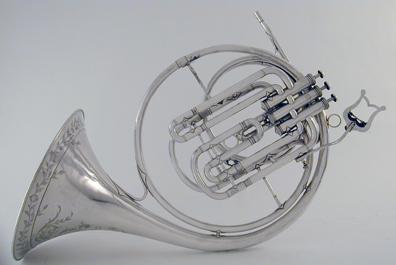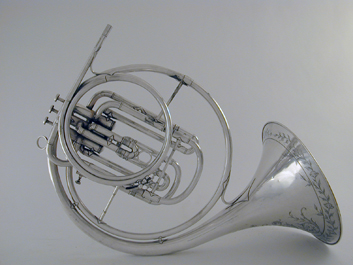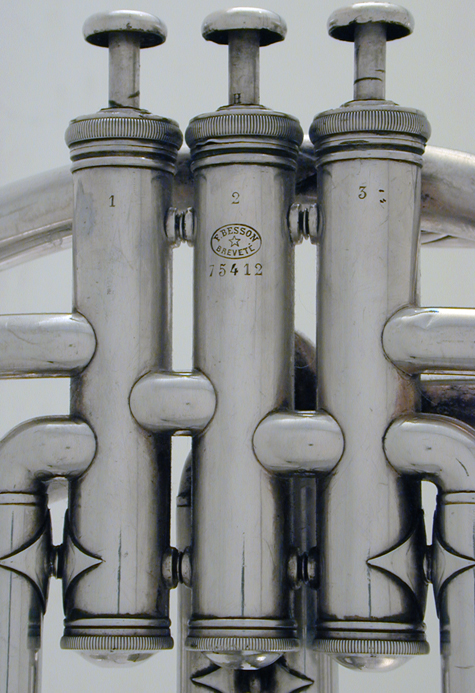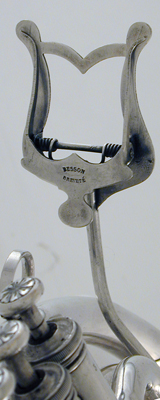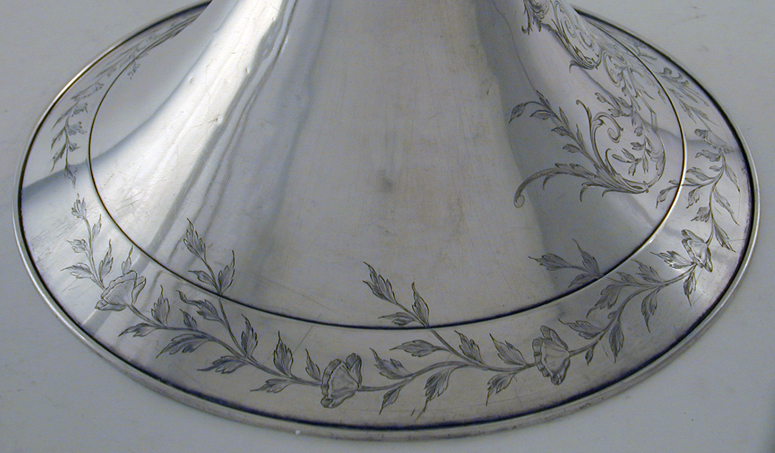The horn shown above is a single cor
d'harmonie made in Paris by F. Besson probably
sometime between 1905 and 1910. It is shown with it's F
crook and original music holder in place. It was found
in western Pennsylvania, US and may have been used in
the Grand Army Band of Scottdale, Pa. (see below).
|

Label on the F crook
|
The elaborate beautiful engraving as seen in
the label at the right and on the bell shown below, is
a delightful feature of this horn. "Systeme Prototype"
on the ribbon refers to the system of mandrels
invented in 1858 which, it is said, assured exact
duplication of instruments and marked the birth of
modert brass instrument manufacture. The address at 96
rue Angoulème dates from 1889 to about 1940.
The firm of Besson was founded by Gustave Auguste
Besson (1820-1874) in Paris in 1838
(according to Constant Pierre) or 1837 (according to
later advertising). Besson was the son of an army
colonel, and at the age of ten was apprenticed to
E.M.J. Dujariez, a maker of military brass
instuments. In 1845 Besson was a signatory of a
letter to the War Ministry protesting the adoption of
brass instruments by Adolphe Sax. (see related
paragraph "Musical Politics in France" concerning the
Gautrot
omnitonic horn). From 1846 onwards he took an
active part in anti-Sax litigation. In 1854 Besson
brass instruments that were allegedly made in
violation of Sax patents wers seized. In 1858,
in order to escape damages incurred from litigation by
Sax, Besson transferred his assets to his wife and
fled to London, leaving her as proprietor in Paris
initially doing business as "Mme F. (Florentine?)
Besson, Londres et Paris" (see also the London
Besson horn in this collection).
|
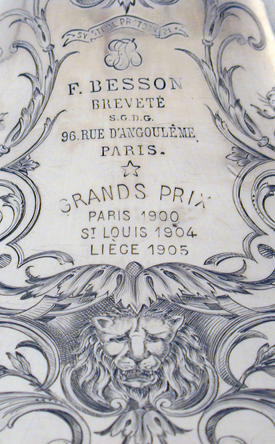 |
By 1873 there were factories in
both London and Paris, with "depôts" in
Brussels, Charleroi, Madrid, Barcelona, etc. Upon the
death of G. A. Besson in 1874 his widow and daughters,
Cécile and Marthe successors as "Mme veuve
Besson." After the death of her mother, Marthe, who
had been trained as a maker by her father, became the
successor. From 1878, she had been responsible for all
patents taken out by the firm. In 1880 she married the
civil servant Aldolphe Fontaine and changed the name
of the firm to "Fontaine-Besson." The following year
the workforce in Paris was reported to be sixty-two.
Since Fontaine hated commerce and musical instrument
making, Marthe took responsibility for both the Paris
and the London branches. In the early 1890s Fontaine's
violent behavior caused her to withdraw to London and
sue for divorce. By 1894 the workforce was reported to
be 145, and the firm had by then produced about 50,000
instruments. That year, Fontaine's provocative conduct
induced the 90 workers and five office staff in
Paris to strike in protest and a six-week lockout
ensued.
The horn bears the serial number 75412 on the valve
set. Production records which can be used to establish
the date of manufacture are available for London
Besson, however none have been found for F. Besson,
Paris.
|
|
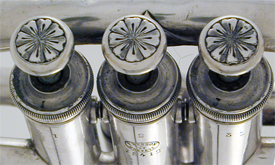
Above, the elegantly engraved valve caps.
Below, the original Besson music holder.
|
|
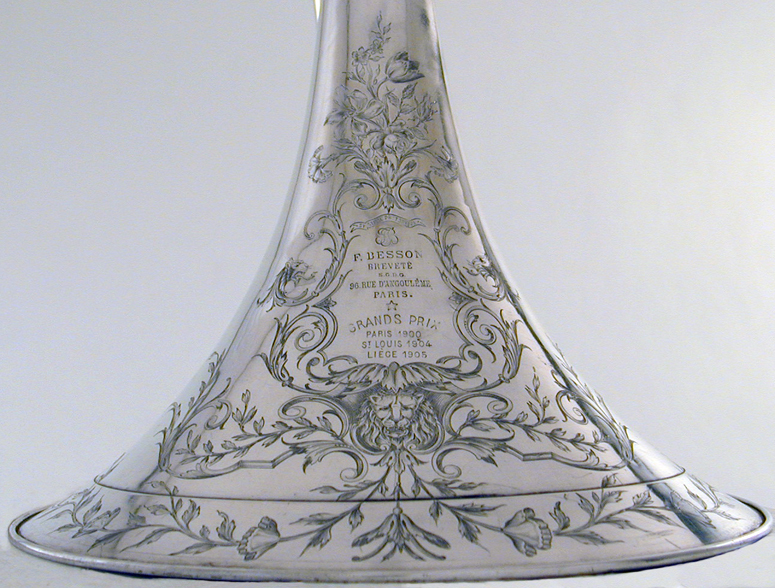
|
|
|
|
The horn shown above was accompanied by a
coarse-screened lithographic copy of a photo of
the Grand Army Band Scottdale, Pa. (below). The caption
on the photo is "Scottdale Band at Connellsville, Pa.
Aug. 13. 1914." There is only one "French" horn player
standing sixth from the left in the photo and shown in
detail at the right. It is indeed unusual for a rural
band from this period to include a crooked horn of this
type, preferring instead to employ mellophones,
saxhorns, or alto or tenor horns such as that of the
player next to the horn player (seventh from the left in
the photo).
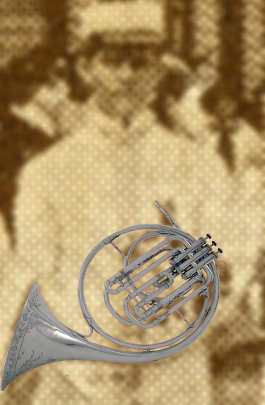
Efforts to confirm that the above horn is in fact
the same one as shown in the photo have been
inconclusive. By adjusting the perspective, the
outline of the horn can be superimposed closely on
the photo but the player's left hand appears to be
well below the valves.
The horn was received in a "King" French horn hard case
by H.N. White, Co. Cleveland Ohio estimated to date from
the 1950s. Pinned inside the case was a pennant from
Scottdale, Pa, further supporting the horn's
provenance.
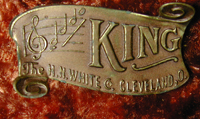 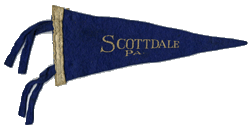
|

|

Scottdale Band at Connellsville, Pa. Aug. 13. 1914.
|







